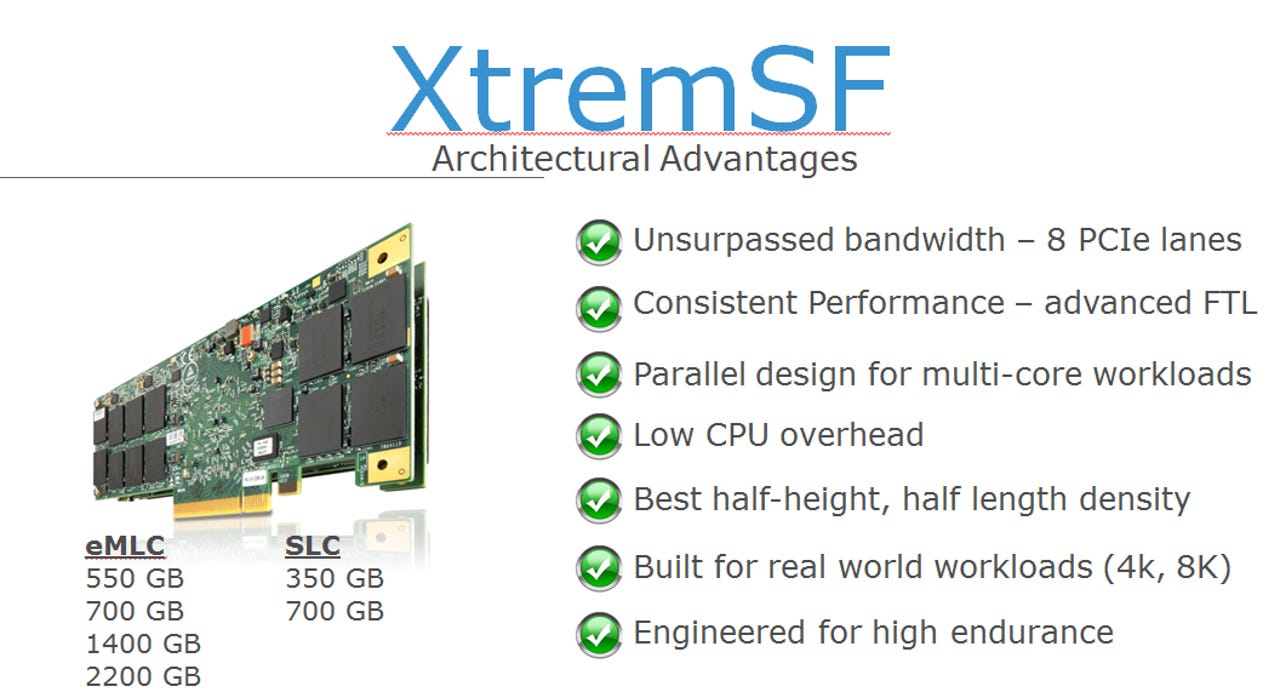EMC revamps flash portfolio 'server to array'

EMC bolstered its Flash server and storage line-up with the addition of PCIe-based cards to speed up applications, software and Flash-based arrays.
The new products, which all fall under the Xtrem family, include XtremSF, which is a new group of PCIe Flash cards built for storage.
EMC's launch comes as Flash storage is becoming the norm in data centers as prices come down and applications need more access to crunch large data sets faster. Big data applications are also driving demand. As a result, storage players are all on the Flash bandwagon. Fusion-IO is a Flash-storage and data center pure play, but giants including EMC and NetApp are all working Flash into the mix.

According to EMC, XtremSF has a bevy of capacities and can be used as direct attached storage or via the company's server caching software, XtremSW Cache formerly known as VFCache.
EMC has been working in Flash into its products with hybrid arrays Isilon, VMAX and VNX and the all-Flash XtremIO array. EMC said that XtremIO was released to key customers.
Among the key details:
- XtremSF Flash devices deliver 1.13 million IOPS and come various capacities.
- The XtremSW Cache software can run EMC's Flash cards and will ultimately contribute to a device independent software suite, XtremSW Suite.
- XtremSF 550 GB and 2.2 TB eMLC capacities are available now. EMC said 700 GB and 1.4 TB capacities will be available later in 2013. XtremSF is designed to go after Fusion-IO's products.
Zahid Hussain, senior vice president and general manager of EMC's Flash unit, said the storage technology is increasingly being used in data centers. "Flash will be in every part of the infrastructure, not just the array," said Hussain.
According to Hussain, a combination of lower costs and application demand are driving usage. Hard disk storage is still cheaper than Flash, but for high capacity applications that need performance solid state works well.
Overall, the hard disk storage days seem to be limited, but Hussain indicated it may take a decade for Flash to totally take over. Why? Flash will still be costly in many cases and there isn't enough manufacturing capacity to meet the demand for all solid state storage.